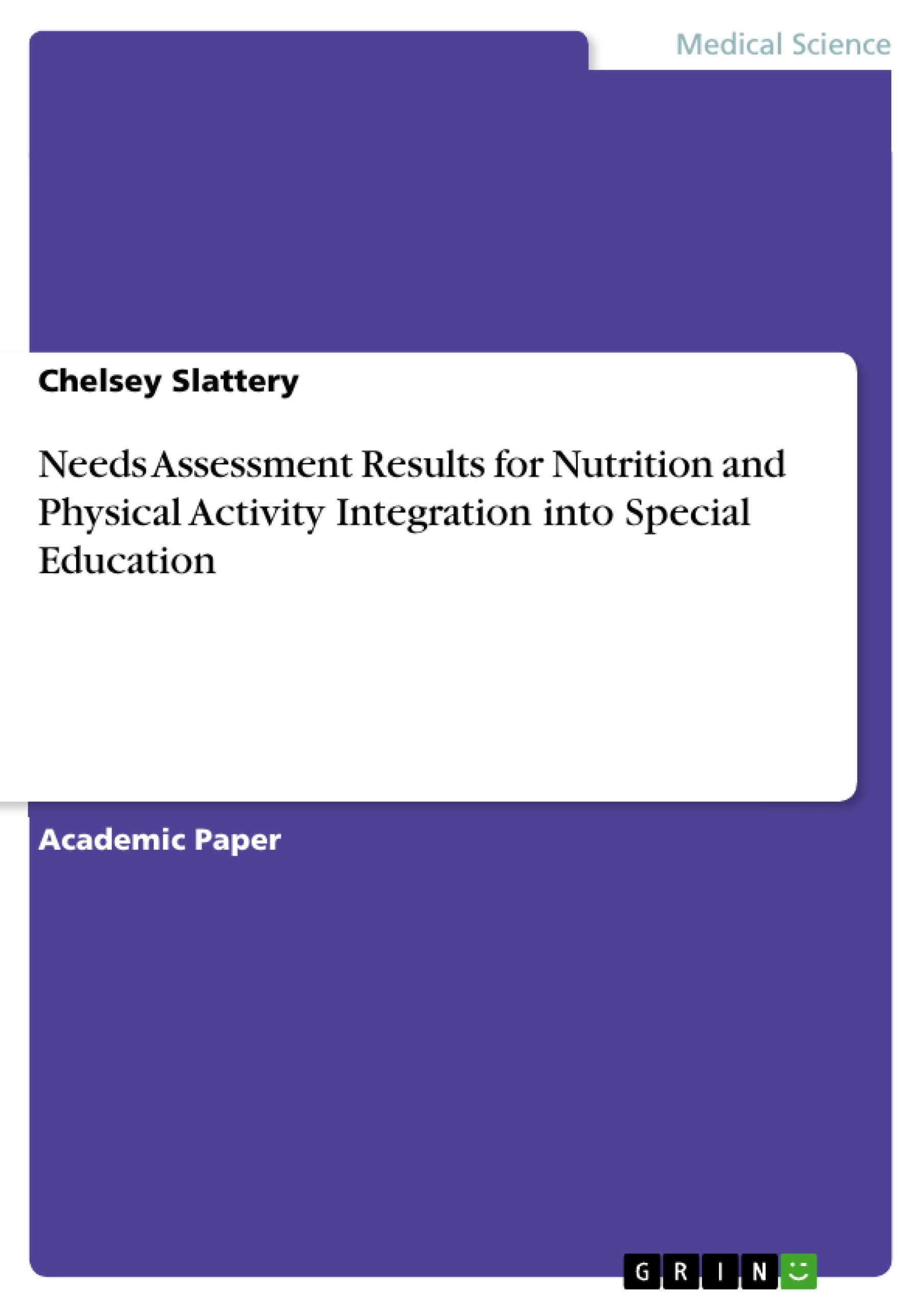Background: Individuals with disabilities tend to have a higher prevalence of overweight compared to their non-disabled peers. Thus, emphasizing the need for effective interventions to assist individuals with disabilities in achieving and maintaining a healthy weight.
Methods: An online survey tool was sent to special education teachers across 5 school districts to identify the need for and barriers to integrating nutrition and physical activity resources into their classrooms.
Results: Of the teachers that were surveyed, 90% reported that their students receive too little nutrition education. The top barriers that were identified as obstacles for more fully integrating nutrition into their classrooms included; time within the school day, lack of resources/materials, and funding.
Conclusions: Special education teachers and their students need access to resources that provide opportunities for nutrition and health-related interventions. Research is needed to identify effective interventions aimed at reducing the number of overweight and individuals with disabilities.
Inhaltsverzeichnis (Table of Contents)
- Abstract
- Introduction
- Methods
- Participants
- Results
- Conclusion
Zielsetzung und Themenschwerpunkte (Objectives and Key Themes)
This study aimed to determine the perceived need for integrating nutrition and physical activity education and resources into special education classrooms. The research examined the needs and barriers identified by special education teachers in Northern California.
- The need for effective interventions to address the high prevalence of overweight and obesity among individuals with disabilities.
- The identification of barriers to integrating nutrition and physical activity education into special education classrooms.
- The exploration of potential strategies for introducing or expanding nutrition and physical activity education in schools.
- The assessment of teacher perceptions regarding the benefits of nutrition and physical activity education for both students and parents.
- The analysis of current practices and methods of integrating physical education into special education classrooms.
Zusammenfassung der Kapitel (Chapter Summaries)
- Abstract: This section provides a brief overview of the study, highlighting the problem of higher obesity rates among individuals with disabilities and the need for effective interventions. It summarizes the methodology, key findings, and conclusions of the study.
- Introduction: This chapter establishes the context and rationale for the study. It discusses the prevalence of obesity among individuals with disabilities, emphasizing the importance of addressing this issue from a young age. It highlights the lack of resources available to teachers working with children and adolescents with disabilities and the need for interventions to address the unique challenges they face.
- Methods: This chapter describes the research methodology employed in the study. It details the survey instrument used to collect data from special education teachers, including the target population, survey design, and data analysis methods. The chapter also discusses the ethical considerations and approvals obtained for the study.
- Results: This chapter presents the findings of the survey, focusing on the perceived need for nutrition and physical activity education, barriers to implementation, and potential strategies for integration. It provides detailed information on teacher responses regarding various aspects of nutrition and physical activity education in special education classrooms.
Schlüsselwörter (Keywords)
This study focuses on the intersection of nutrition, obesity, and disabilities. The primary keywords and concepts include needs assessment, nutrition education, physical activity, special education, barriers, interventions, and resources.
- Quote paper
- Chelsey Slattery (Author), 2018, Needs Assessment Results for Nutrition and Physical Activity Integration into Special Education, Munich, GRIN Verlag, https://www.grin.com/document/412302



